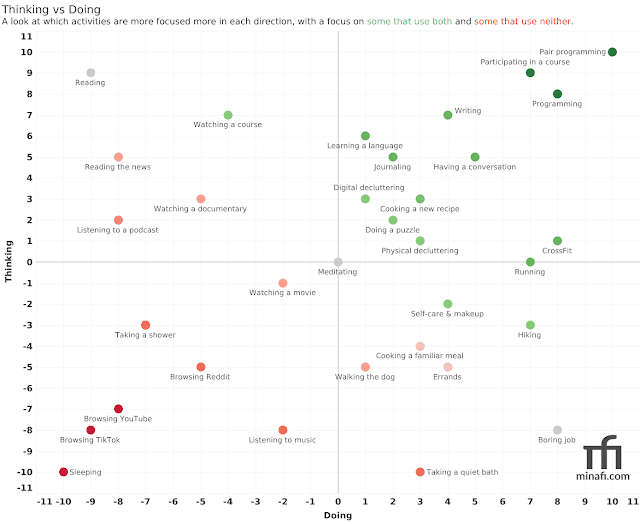On a sheet of paper draw a vertical axis and a horizontal axis meeting in the middle creating 4 quadrants. In these quadrants we’re going to place activities throughout the day based on two criteria: how much thought is involved and how much action (doing) is involved.
- Top left: “Think” – These are actions that are high in “thinking” but low in “doing” (reading, math). These require you to generate your own thoughts but don’t require any action on your part. They’re one way.
- Bottom right: “Do” – These are actions that are high in “doing” but low in “thinking” (running, yard work). These require your action to get them done.
- Top right: “Burn” – These are actions that are high in “thinking” and high in “doing” (playing a sport, building something, working through the night, taking care of family). This doesn’t necessarily mean you’re running around. Your “doing” could mean focused work.
- Bottom right: “Space” – These are actions that are low in both “thinking” and “doing” (social media, sitting on a beach).
Why challenge yourself if you don’t have to?
For people with that mindset I say the same thing: try giving yourself a little more space. You can start small – an hour a week to do whatever you want. If you can’t find an hour to keep yourself occupied then that’s its own problem. In that case, you can research new hobbies (think) or make a personal goals list to get yourself excited.
Do not confine yourself to one type of action. If you’re feeling burnt out, exhausted, or just not enjoying yourself, you have the option to change what you spend your time doing.The more you do, the more you’ll discover what it is in life that you truly enjoy.



沒有留言:
發佈留言